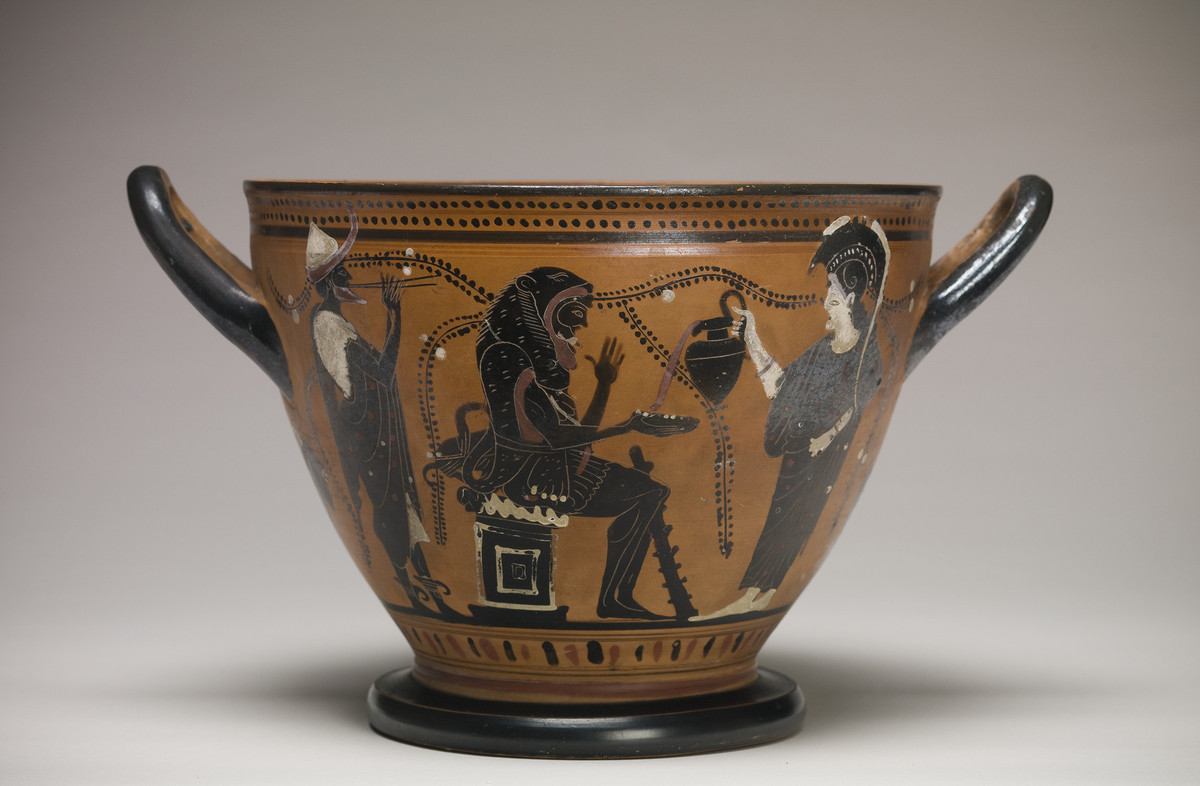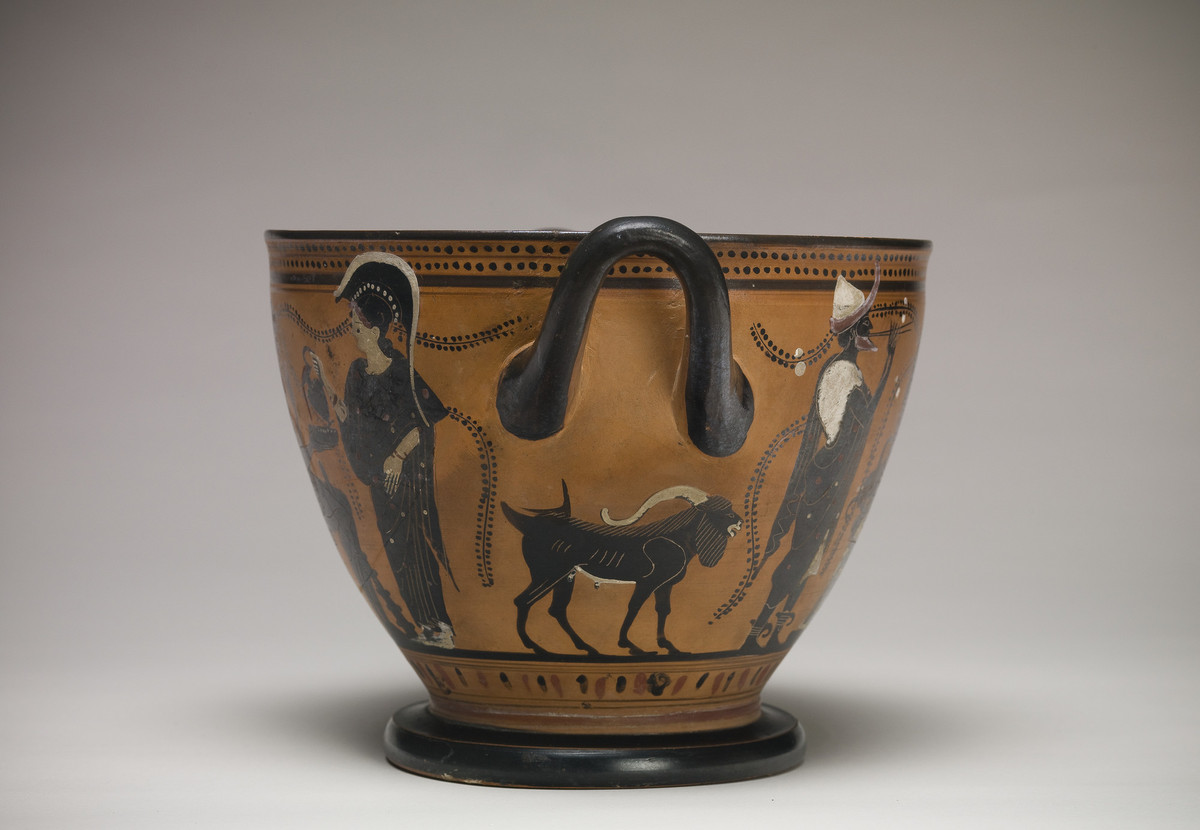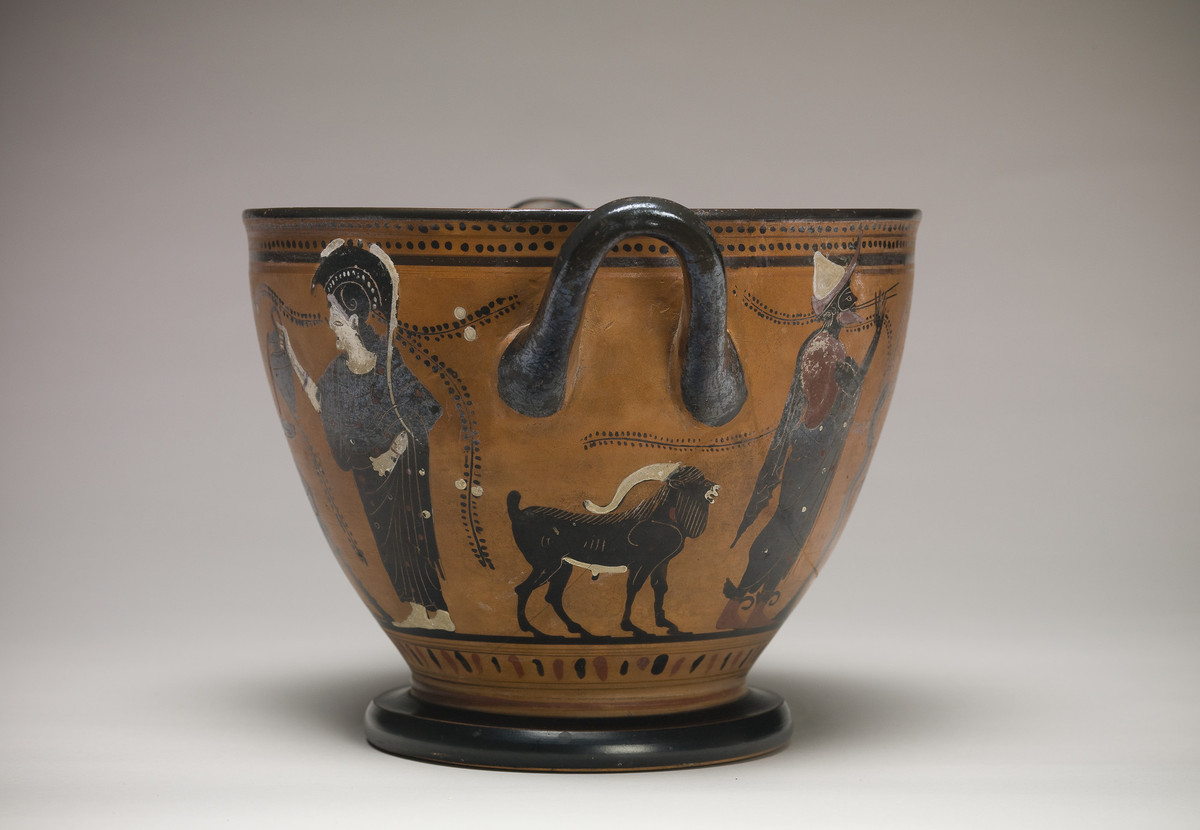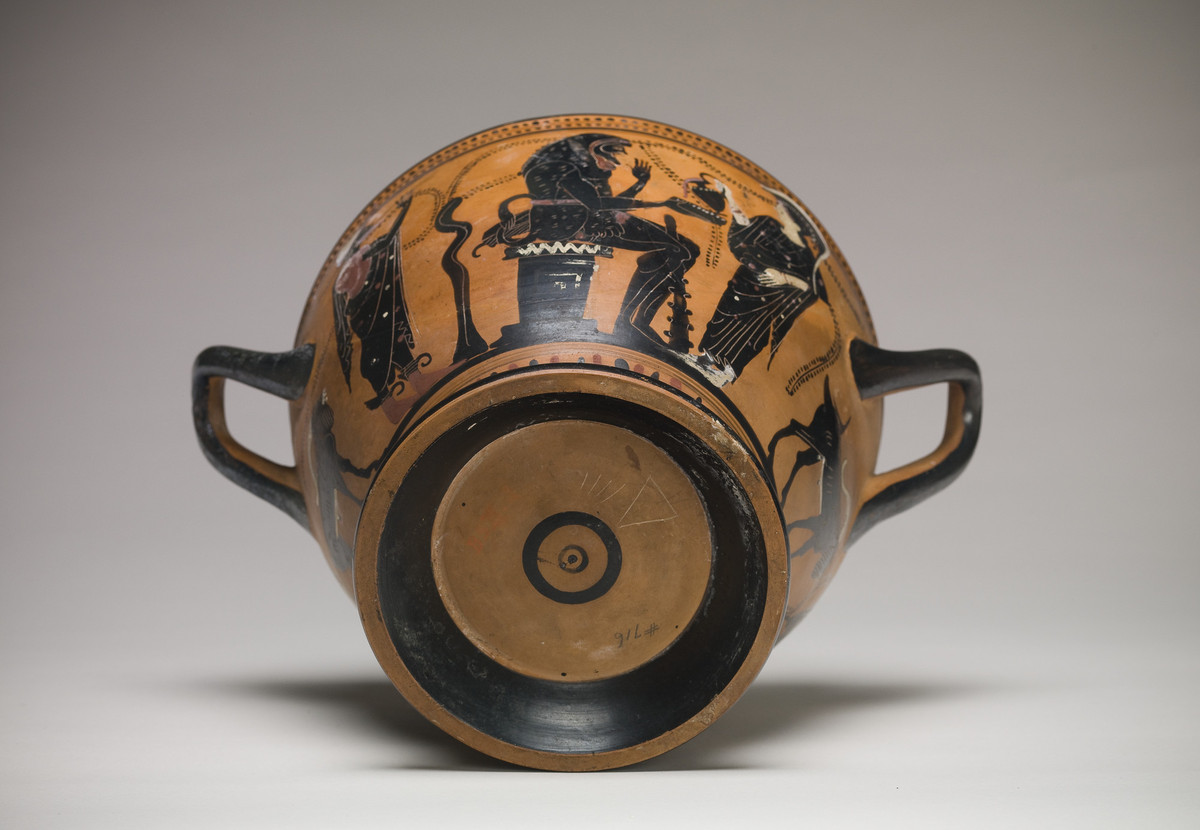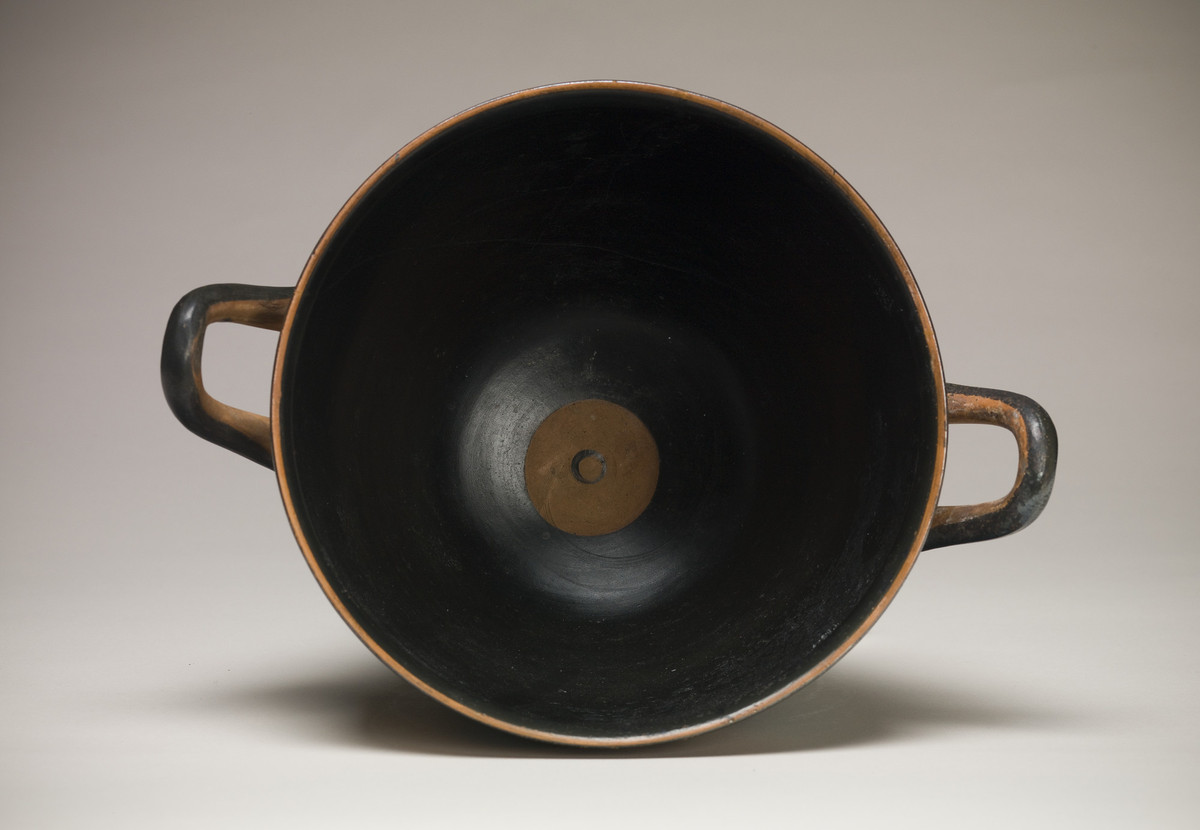On View
Theseus Painter
Greek
Place made: Europe; Greece; Attica
Skyphos with Herakles, Athena, and Hermes, Archaic Period; ca. 500 BCE
Overall: 7 in x 11 5/8 in x 8 5/8 in; 17.8 cm x 29.5 cm x 21.9 cm
Purchase with the Nancy Everett Dwight Fund
MH 1925.3.B.SII

 GIVE
GIVE